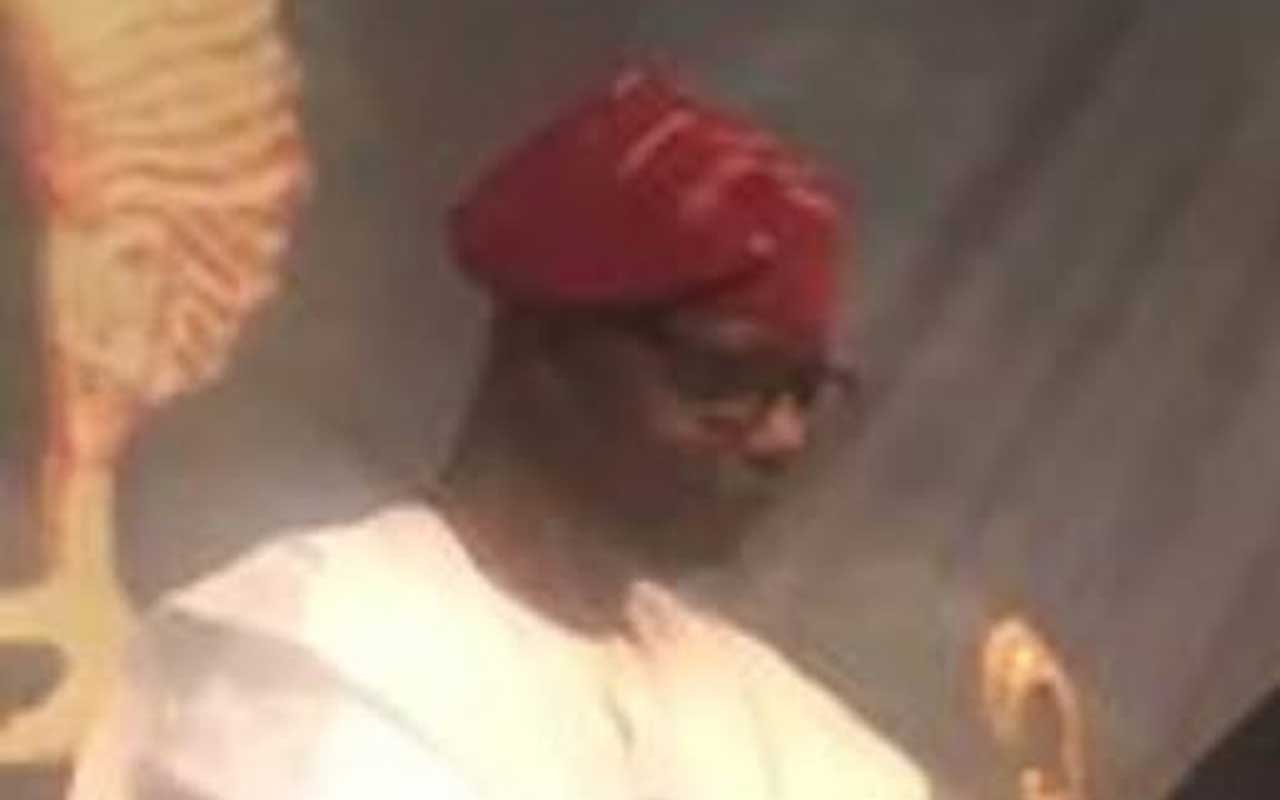As I stood in the doorway, watching Mr Lade Bonuola, aka Ladbone, chat with Elder Mac Alabi, the Night Editor of The Guardian, I was struck by the warmth and camaraderie between them. Ladbone’s gentle wave and whispered hello belied his towering presence in Nigerian journalism. His was a commanding figure that inspired respect and admiration from colleagues and peers alike.
Alabi and I followed his progress to his office, interrupting his journey frequently for brief chats and snappy wisecracks with reporters.
Baba, as everyone called Mr. Alabi, turned slowly to me and said: “Ladbone is the last editor of The Guardian.”
“Penultimate editor,” I corrected, surprised that Baba misspoke.
Mac Alabi, my boss and mentor, was widely regarded as an authority on grammar and usage. In all the years we spent together, he never misspelled, misspoke, or miscommunicated. Or placed a comma, hyphen, or period in the wrong place. Baba was word-perfect!
Pablo Picasso once said: “Learn the rules like a pro, so you can break them like an artist,” a phrase that means understanding the fundamentals of a skill is essential before you can effectively innovate or deviate from them. That was a lesson Baba took to heart.
“Ifeanyi, Ladbone is the last editor of The Guardian,” Baba repeated. “I know The Guardian Style book made a distinction between the latest edition of The Guardian and the last edition of The Guardian, which hopefully will never be printed. But this is the end of an era, an epoch…there will never be another editor like him.”
If you ever listened to the lyrics of Kenny Rogers’ hit song, “The Gambler,” then you will understand the weight of Baba’s words when he speaks about journalism, history, and life. He was an encyclopedia and an honest guide.
Thirty young men took a written test in The Guardian in 1987 conducted by Alabi, and five of us were employed as sub/copy editors.
I had just arrived in Lagos from NYSC in Torugbene, Bendel State, and could hardly find my way from Mafoluku, Oshodi to The Rutam House, the home of The Guardian.
Yes, it was a big deal, and I never left the house without an elaborate map with bus stops and detours clearly marked!
On assumption of duties, I was given a dictionary and the famous The Guardian style book that clearly emphasised that the paper was not beholden to any special interest; its allegiance was to the Federal Republic of Nigeria.
The Guardian style book has guided hundreds of sub-editors and editors. Those who stumbled often did so because they strayed from its counsel.
I still reach out for my dog-eared copy now and again. I have also read the Associated Press style book, which is considered the gold standard, but my favorite is The Economist’s handbook, which warns editors to avoid a certain sameness in the stories published, a euphemism for avoiding monotony or formulaic writing. “Do your best to be lucid. Simple sentences help,” it said.
A master of the craft
Football is probably not Ladbone’s favorite pastime. Sport writers struggled in The Guardian because of his lack of passion for sports. Ironically, it is football that provides both the lingo and analogy for Ladbone’s breathtaking success. Coaches, like editors, are composites of their players; a coach’s style and effectiveness are shaped by the personalities, skills, and interactions of the players they coach. So also, famous editors are composites of their reporters and writers. Editors refine and shape the work of others, but their own voice and perspective are also integral to the final product.
An editor influences a piece by selecting, cutting, and revising content, and the final published work is a product of both the original reporter’s contributions and the editor’s final decisions and vision.
Like a football coach, an editor’s reputation is built upon the foundation of the stories they edited, which are inherently composites of both the original writer’s work and the editor’s final decisions and vision.
The best examples of these can be found in two breathtaking teams — team and Ladbone’s pioneer The Guardian team birthed in 1983.
The 1998 French team stands out as one of the most balanced World Cup teams in history.
With a talented squad featuring exceptional players in every position, France’s depth and versatility were undeniable.
Fabien Barthez anchored the goal, while Lilian Thuram, Marcel Desailly, and Laurent Blanc formed a solid defensive unit.
The midfield trio of Zinedine Zidane, Didier Deschamps, and Patrick Vieira controlled the tempo, and the attack was led to by the pace and skill of Thierry Henry, David Trezeguet, and Christophe Dugarry.
Under Aime Jacquet’s tactical acumen, France demonstrated flexibility, adapting their formation and strategy to suit opponents and situations.
The team’s cohesion was remarkable, with players complementing each other’s strengths and working together towards a common goal. France performed exceptionally well under pressure, winning crucial matches and handling the weight of expectation on home soil.
Their impressive World Cup campaign included six wins and one draw, with only two goals conceded throughout the tournament.
Notable victories included a 3-0 thrashing of Brazil in the final and a dominant win over Italy in the quarterfinals.
Ladbone’s squad was unarguably the best and most balanced newsroom ever in Nigeria. Let’s look at the departments.
Town meets gown in marketplace of ideas
The editorial board, in a typical newspaper, usually consists of the editor responsible for the editorial page and editorial writers.
Editorial boards meet regularly to discuss the latest news and opinion trends and to discuss what the publication should say on a range of issues, including current events.
They will then decide who will write which editorials and for what day.
When such an editorial appears in a newspaper, it is considered the institutional opinion of that newspaper, and the resulting pieces are rarely signed by the individual primarily responsible for writing it.
But The Guardian, thanks to Stanley Macebuh and Onwuchekwa Jemie, opted for a diverse, intellectual editorial board mirroring The New York Times’ 14-member editorial team.
Newspapers with intellectuals and academics on their editorial boards benefit from their expertise and diverse perspectives.
These scholars bring in-depth analysis and credibility to the publication, providing readers with thoughtful commentary on complex issues.
By lending their expertise, academic editorial board members enhance the newspaper’s reputation and trustworthiness.
This collaboration promotes civic engagement, informed discourse, and well-rounded perspectives, making the newspaper a go-to source for informed analysis.
Ultimately, the inclusion of academics enriches public discourse, encouraging readers to consider multiple sides of an issue and fostering a more informed citizenry.
That this experiment, which failed earlier in Daily Times, succeeded in The Guardian said a lot about Ladbone’s accommodation and comfort with eggheads, especially in situations where their considerable wage bill was a strain on the lean purse of the young newspaper.
Add to that the quirks and idiosyncrasies of irreverent scholars like Chinweizu, Odia, and Ashikiwe.
The Nigerian ivory tower does not get better than Stanley Macebuh, Onwuchekwa Jemie, Femi Osofisan, Godwin Sogolo, Herbert Ekwekwe, Sonala Olumhense, Odia Ofeimu, Mary Kanu, Chinweizu, Sully Abu, Edwin Madunagu, Olatunji Dare, etc. And they all found home and accommodation in Ladbone’s The Guardian.
A master craftsman
Ladbone’s background in copy editing and feature writing profoundly shaped his approach to storytelling and information dissemination. His experience in the sub-editing desk, the heart of a newspaper’s editorial operations, instilled in him a keen eye for detail and a commitment to accuracy. He was a master of his craft, and his work reflected his dedication to excellence.
As a sub-editor, Ladbone became the nation’s ombudsman with his “Caught Out” column, holding newspapers and journalists accountable for errors of facts, syntax, illogicality, and fake news.
As the pioneer editor of The Guardian, he later created the best sub-editing desk till date in any newsroom in Nigeria, setting a high standard for precision, clarity, and consistency. His attention to and commitment to accuracy inspired a generation of journalists.
The Guardian Sub desk was a school of hard knocks; it presented a very steep learning curve. But it was worth it. It was a masterclass in learning the English language and journalism.
Art of copy editing
Copy editing is a meticulous process that demands attention to detail, a commitment to excellence, and a passion for precision. At its core, it involves refining the text to ensure clarity, correctness, conciseness, consistency, and cohesion. This multifaceted process encompasses fact-checking, adhering to a style guide, and carefully reviewing each sentence to detect errors and areas for improvement.
A good copy editor strives to preserve the author’s original intent and style while making improvements, ensuring the text is easy to understand and free of jargon or ambiguous language.
Verifying factual accuracy, spelling, grammar, punctuation, and syntax is also crucial. The goal is to remove unnecessary words and phrases, making the text as brief as possible while maintaining uniformity in style, tone, and formatting.
Effective copy editing requires a high level of attention to detail to catch subtle mistakes.
This involves conducting a thorough review of the text, including a final proofread to catch any remaining typos or minor errors.
By adjusting headings, paragraphs, and other formatting elements, copy editors enhance the overall readability and flow of the
A legacy of excellence
Under Ladbone’s editorship, The Guardian became a benchmark for journalistic excellence in Nigeria.
His leadership and vision transformed the newspaper into a powerful tool for holding those in power accountable. The Guardian’s fearless reporting and incisive commentary earned it a reputation as one of the most respected and widely read newspapers in the country.
Ladbone’s approach to editing was akin to Ben Bradlee’s philosophy: “The news business is a game of errors. The guy who gets the most right, wins.”
Ladbone’s dedication to accuracy and fairness earned him the respect of his peers and readers alike.
Like Bradlee, Ladbone was a master of the newspaper game. He knew how to craft a story that would grab readers’ attention and spark meaningful discussions. His editorial decisions were guided by a deep understanding of the issues and a commitment to telling the stories that needed to be told.
A national treasure
Today, we celebrate a giant among journalists, Lade Bonuola, on his birthday. I believe he deserves a national honor and a biographical film. The world has changed dramatically since Ladbone acted as journalism’s ombudsman, but facts and truth should still matter in the world of journalism.
Happy birthday to a mentor and birthday mate!
May this milestone birthday be a celebration of your life, legacy, and contributions to journalism. May it be a time for reflection on the past, joy in the present, and hope for the future.
As we honour Ladbone’s remarkable career, we also acknowledge the impact he has had on the lives of countless journalists and Nigerians.
His dedication to truth, accuracy, and excellence has inspired a generation of journalists to strive for greatness.
In conclusion, Lade Bonuola’s legacy serves as a reminder of the power of journalism to shape society and hold those in power accountable.
As we move forward in an ever-changing media landscape, we must continue to uphold the values of truth, accuracy, and fairness that Ladbone embodied throughout his illustrious career.
Let us celebrate this remarkable individual and his contributions to Nigerian journalism.
Happy birthday, Ladbone!
Mbanefo currently lives in Montreal, Canada.






